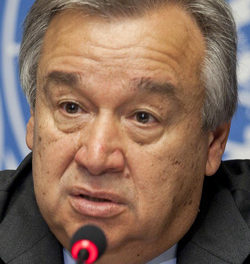
Improved battery technology vital to renewables market

According to a report by the International Energy Agency, renewable energy will make up almost half of sub-Saharan Africa’s power generation growth by 2040. The uptake is largely because of improved technology, greater regulations promoting access and massive reductions in cost.
Improving access to reliable and sustainable energy will be critical for economic and social development on the continent. This is the view of Daniel Goldstuck, Head of Energy Storage Services at the SOLA Group and speaker the leading solar and energy storage event in Africa, Solar Power Africa.
The majority of national grids are designed in a way that requires a consistent and equal balance between electricity supply and demand to function properly. Goldstuck said that one of the biggest challenges that utilities face is when the electricity system cannot carry enough energy to meet the demands of consumers or cannot distribute the excess energy across constrained networks.
“The integration of bulk energy storage into an electricity grid can help utilities mitigate costs and reduce the chance of blackouts, particularly during periods of high demand or intermittency, which may eventually be a concern with mass integration of solar and wind power,” he added.
But utilities are also making use of bulk energy storage to reduce costs. The provision of large-scale energy storage on site prevents the necessity of building or expanding large transmission lines from areas where electricity is generated, enabling power to be dispatched consistently when needed.
Goldstuck explained that, in addition to grid stability and cost reductions, energy storage provides an essential technology intervention in African countries where grid access might be limited or weak.
“Energy storage can, for example, be used to provide additional power requirements where there are only nominal household grid services via small energy devices – enabling economic development in previously underdeveloped areas.”
“Energy storage can enable the broader use of renewable energy, and energy services in general, in very remote areas,” he pointed out.
In the current energy storage market, lithium-ion batteries dominate, largely driven by the uptake of electric vehicles. But lithium-ion batteries are now emerging as a suitable technology for stationary energy storage with improved round trip efficiency, cycle life, decreased storage capacity degradation and black-start capability to restart grids that have experienced outages.
Some of the new technologies that are expanding the energy storage market include further electrochemical energy storage systems, such as flow batteries and some non-lithium battery chemistries that boast improved long-duration capabilities. Flow batteries, for example, circulate a liquid electrolyte through stacks of electrochemical cells and have long held the promise of 10-hour durations, tens of thousands of cycles and minimal degradation.
Goldstuck said that at current costs, multiple forms of energy storage are now economically viable with suitable duration capabilities that can accelerate solar and wind penetration, grid resilience and serve to stabilise volatile energy prices if regulation and policy is improved.
In South Africa, this has been recognised with Eskom calling for bids for the design and construction of a battery energy storage system (BESS) for the Skaapvlei substation at Vredendal, in the Western Cape. The aim is that the BESS will improve the export of energy from the Sere wind farm on to the grid, while further BESS procurement under the same programme is intended to address voltage and capacity constraints, support the integration of renewable energy onto the grid, and reduce the need to expand some distribution substations and power lines.
The biggest challenge, however, is that there has been a lack of policy commitment across the continent to fully integrate this technology.
Goldstuck said that this is imperative to ensure investment into large storage projects in Africa and smooth regulations around local storage assets within the distribution networks.
Storage delivers benefits at all nodes of the network as a transmission asset: within a distribution substation yard to defer power line construction, or behind the meter within a distribution network to provide multiple stacked and synergistic services to both the end customer and distribution network service provider.
“Ultimately, improved storage technology enables the integration of renewable energy from utility to embedded generation scale, bringing energy innovation to address the challenges that many countries face,” he explained.
“Storage is fundamental to ensuring reliability of a high-penetration renewable energy grid for greater economic and operational benefit, reducing the cost of electricity across the continent,” said Goldstuck.
“There is no doubt that the improvement to energy storage technology will play a central role in providing Africa with reliable, cost-effective clean energy, enabling further economic activity,” Goldstuck added.
Focusing on solar energy storage, Daniel Goldstuck will be one of the speakers at the virtual Solar Power Africa event, which is set to take place from 16 to 20 November.













































